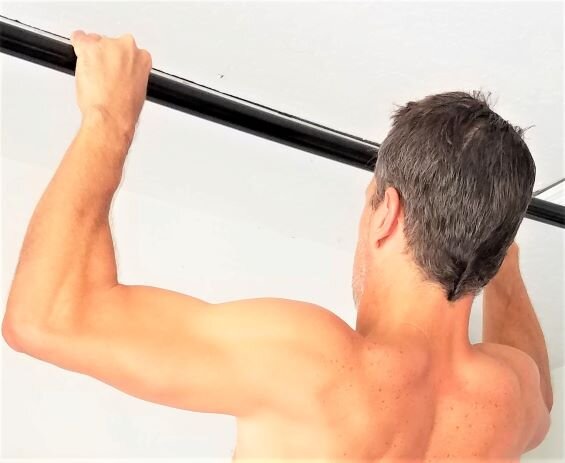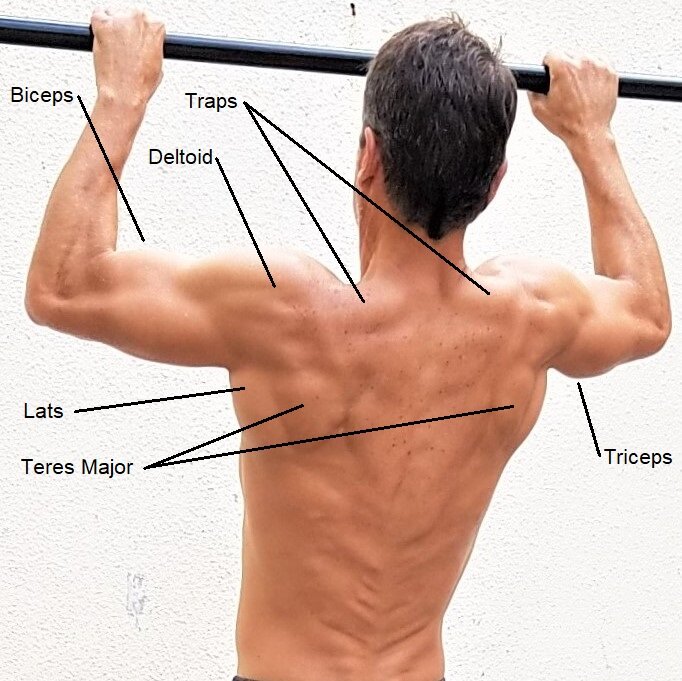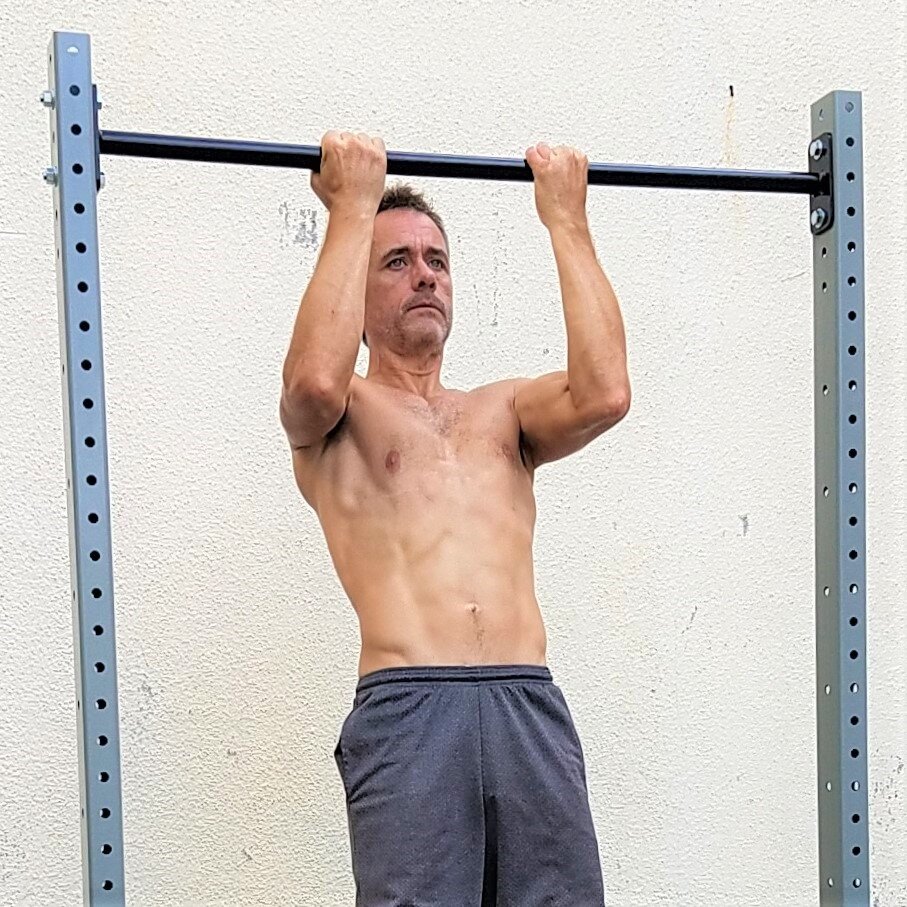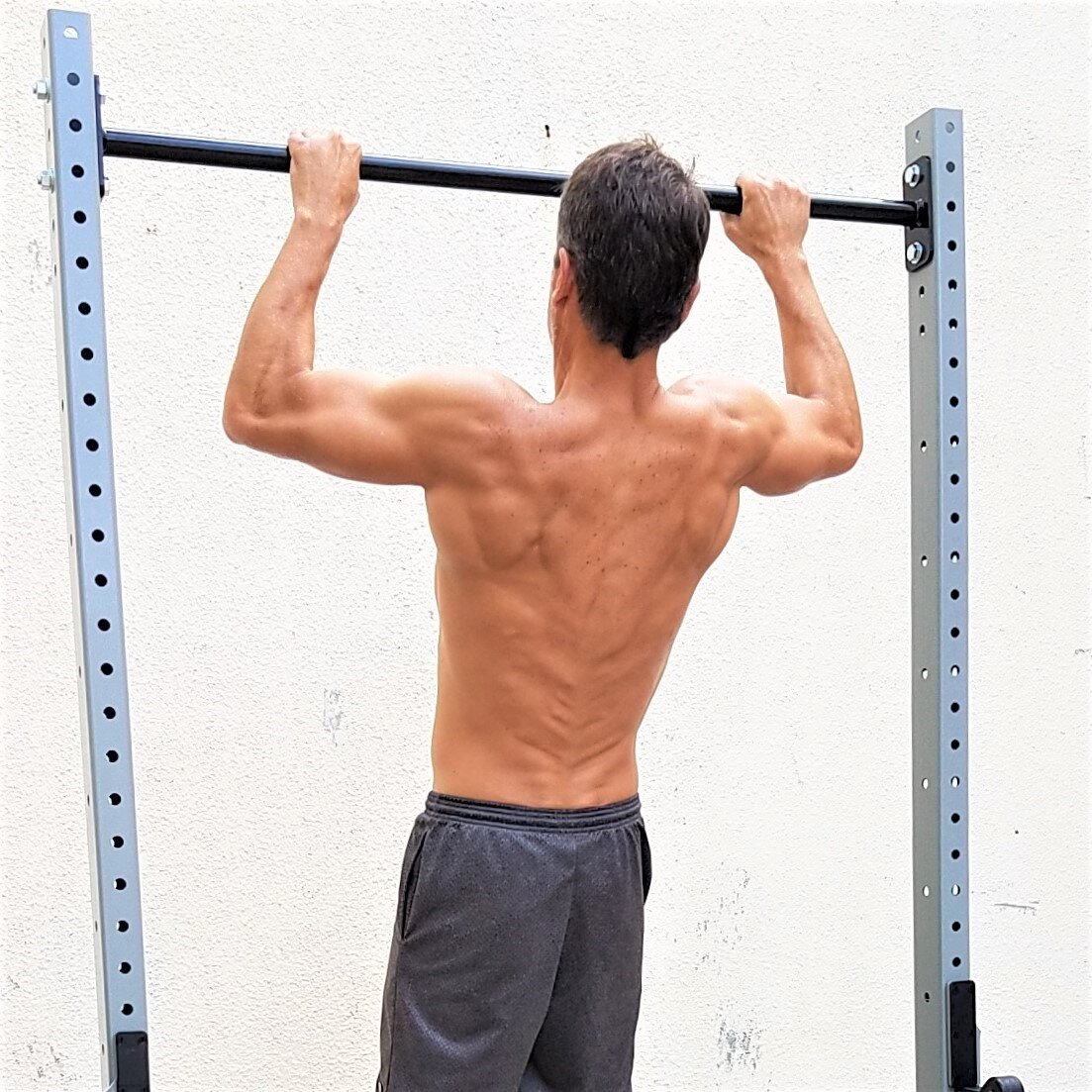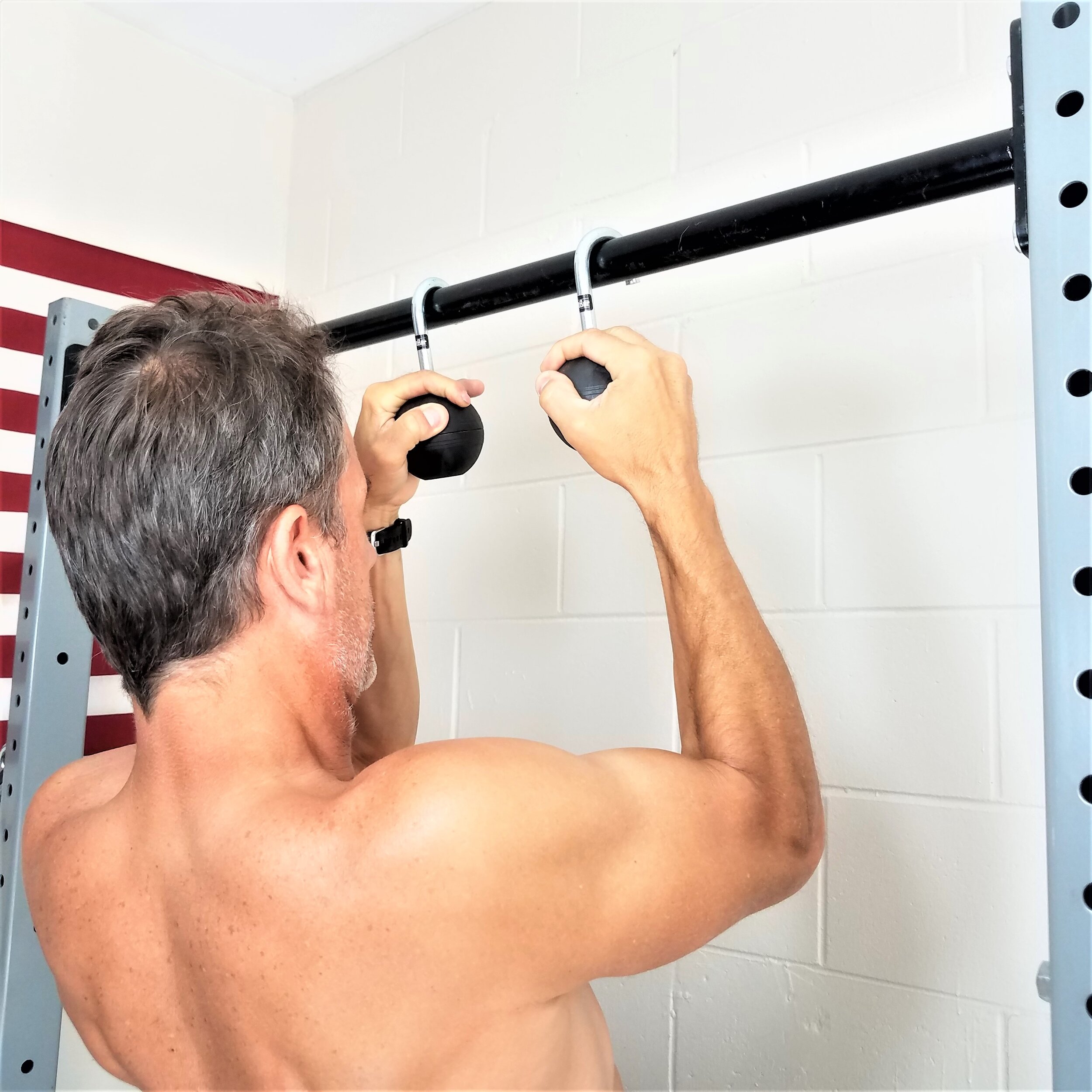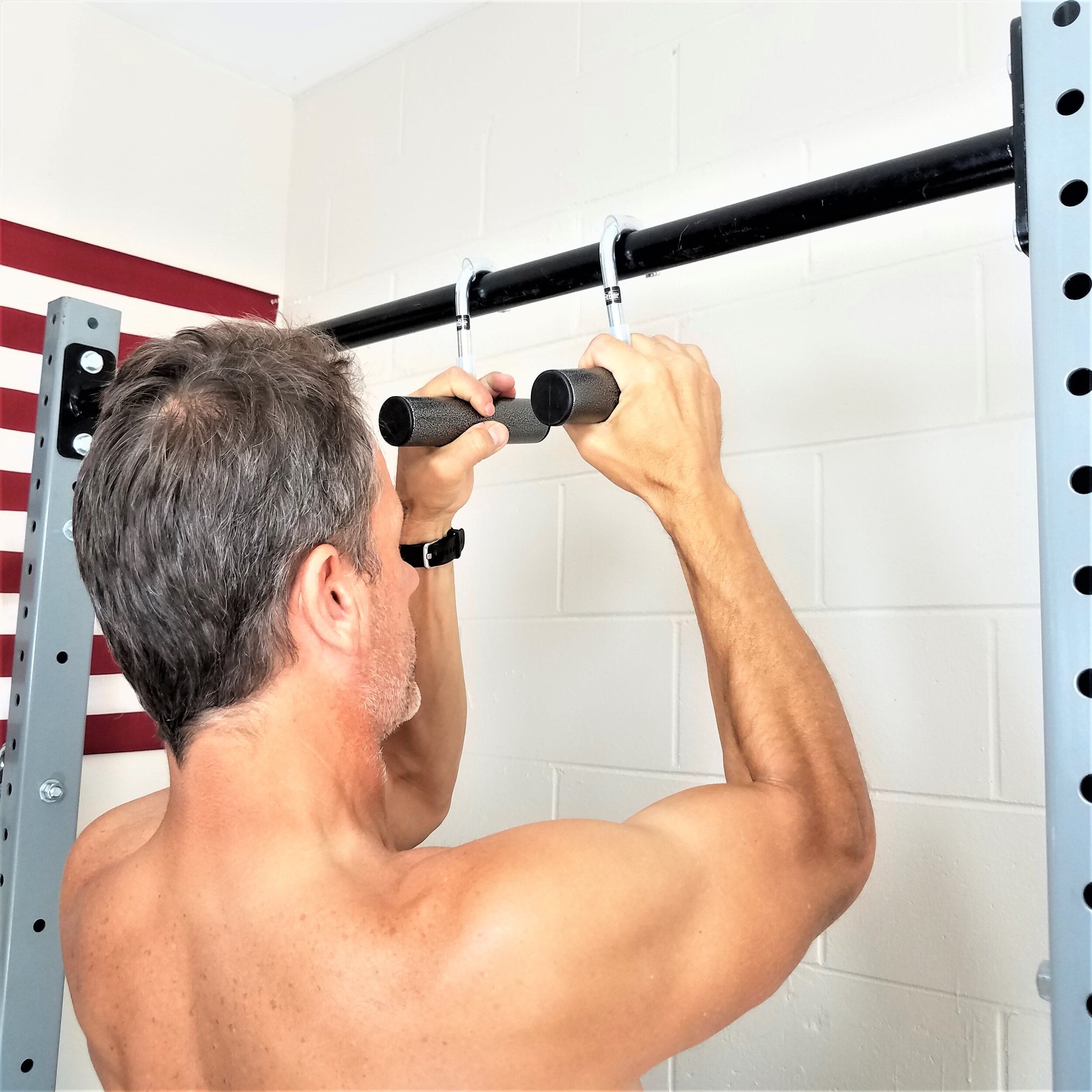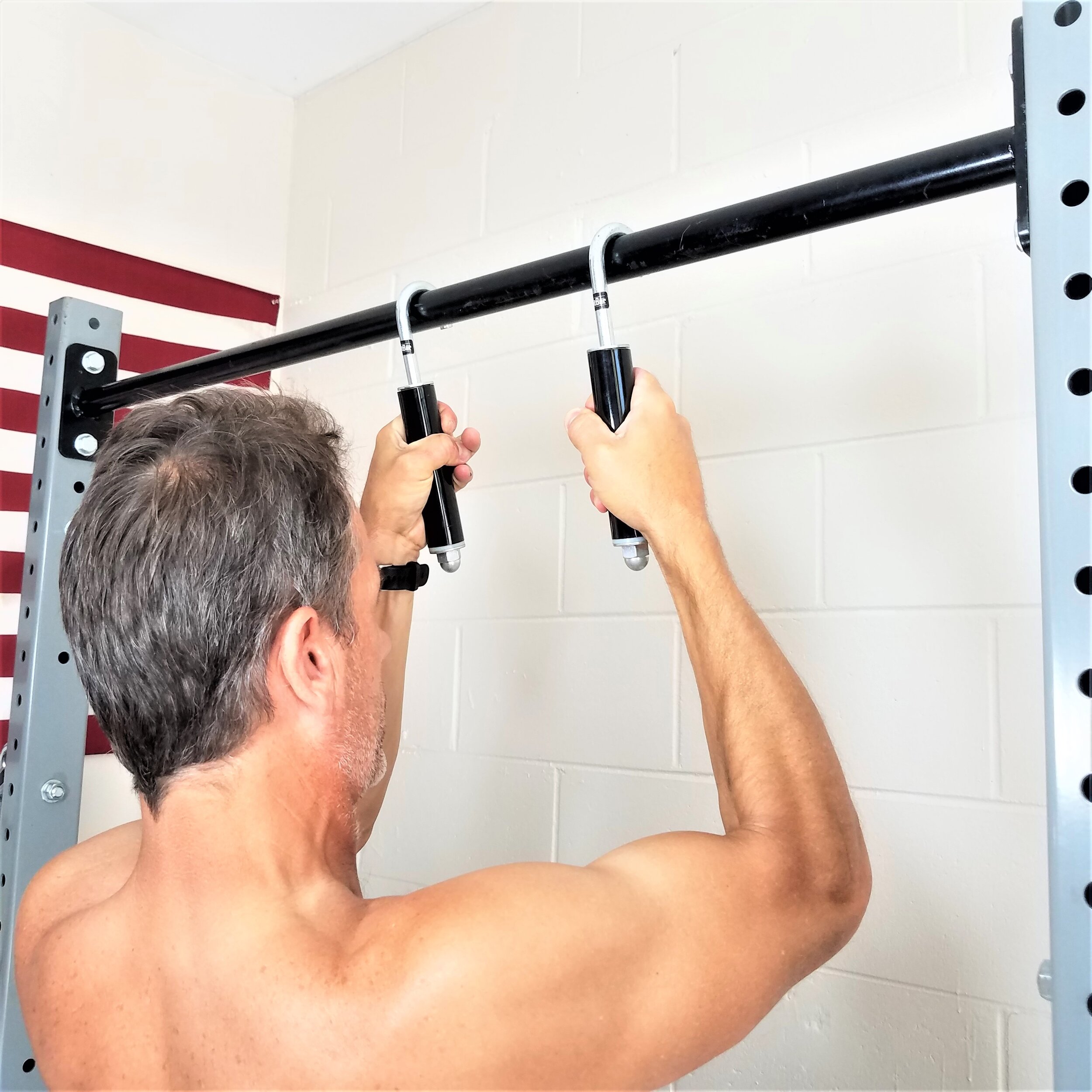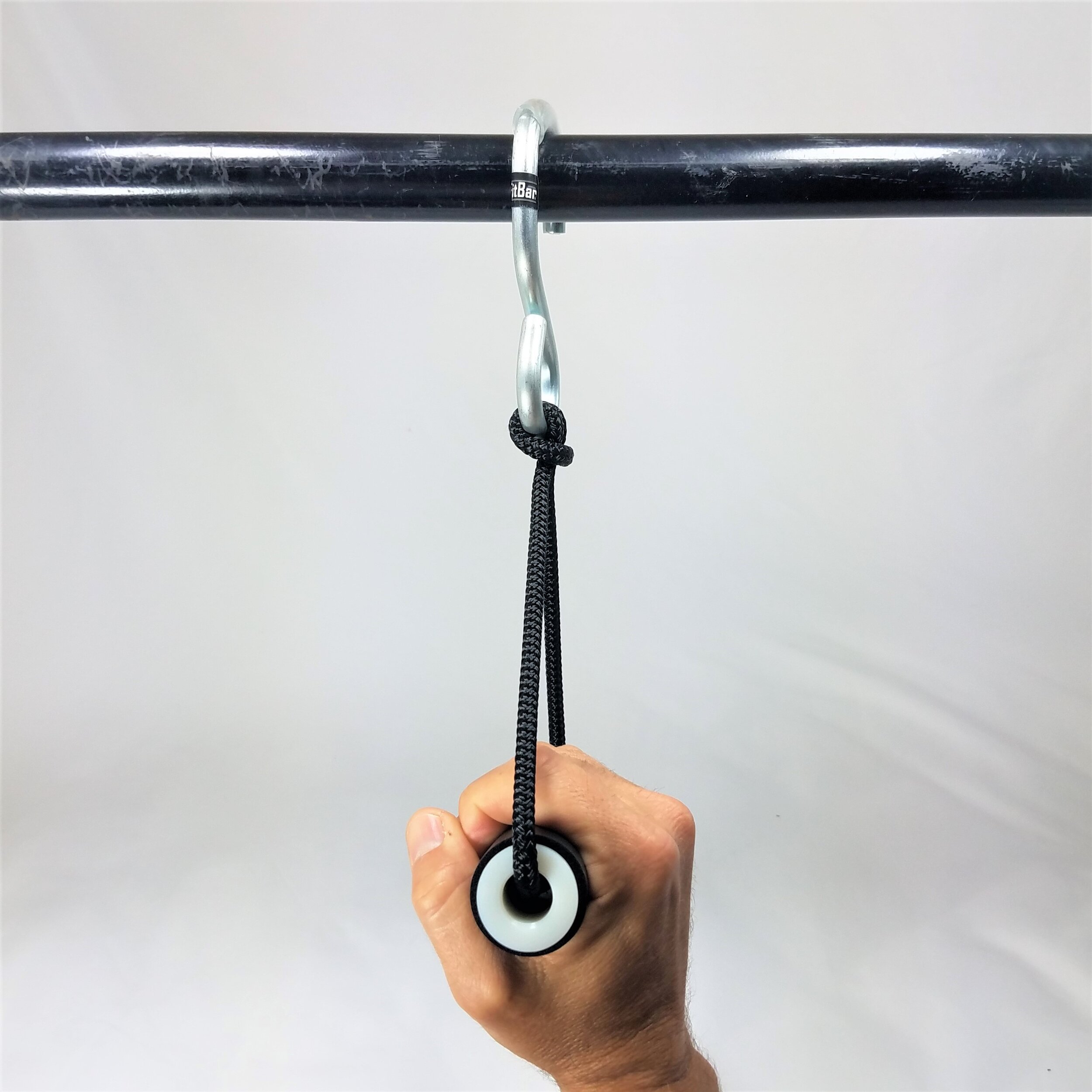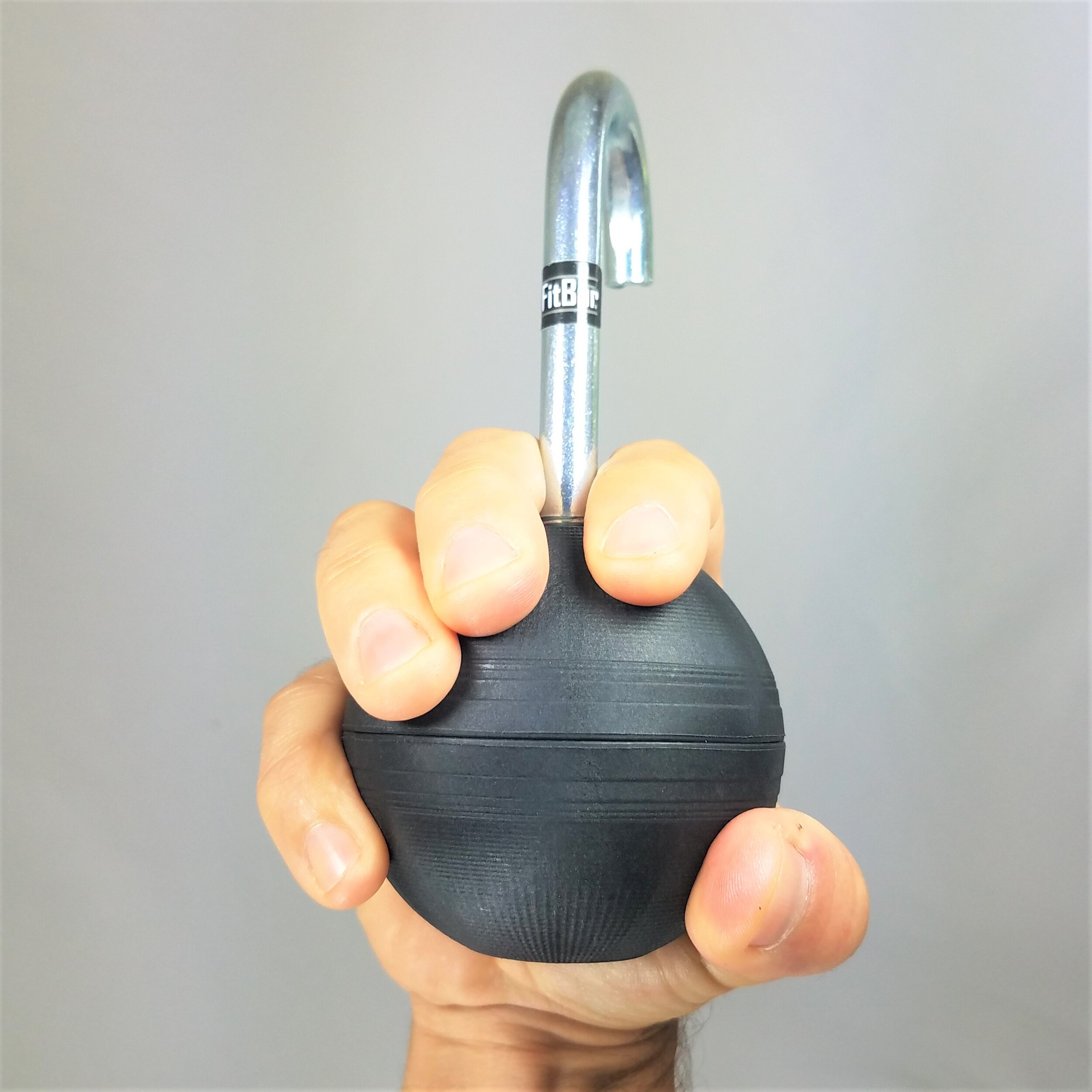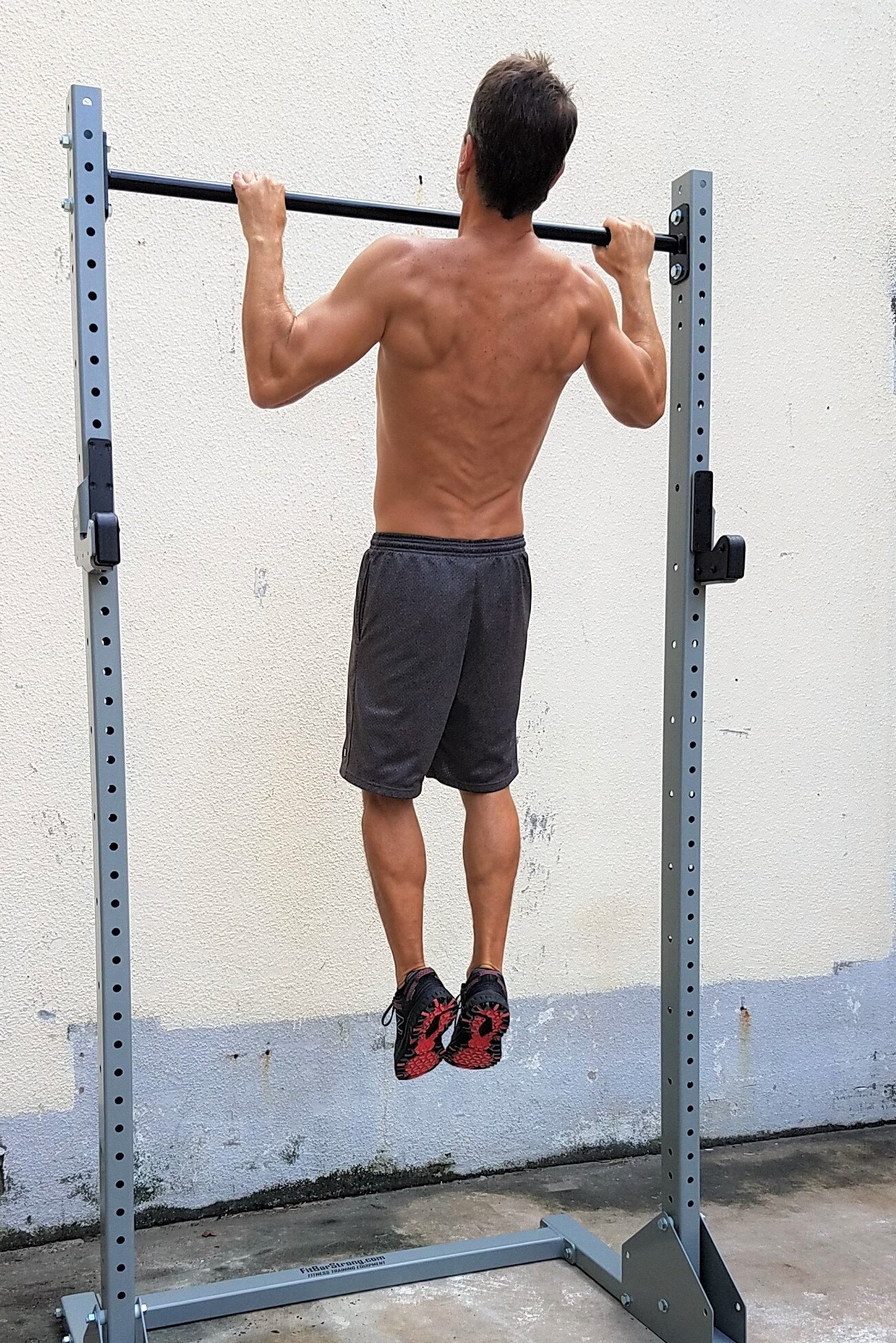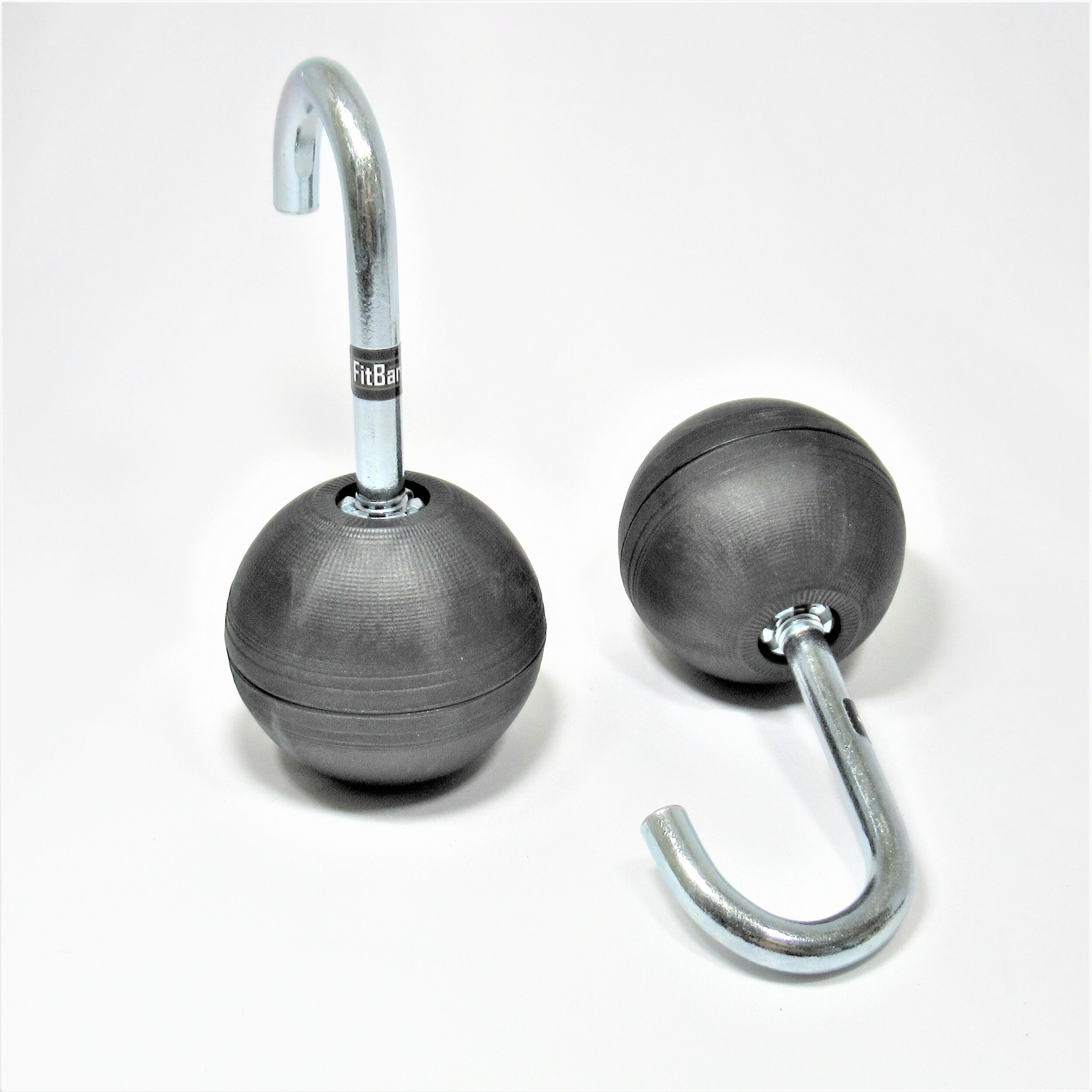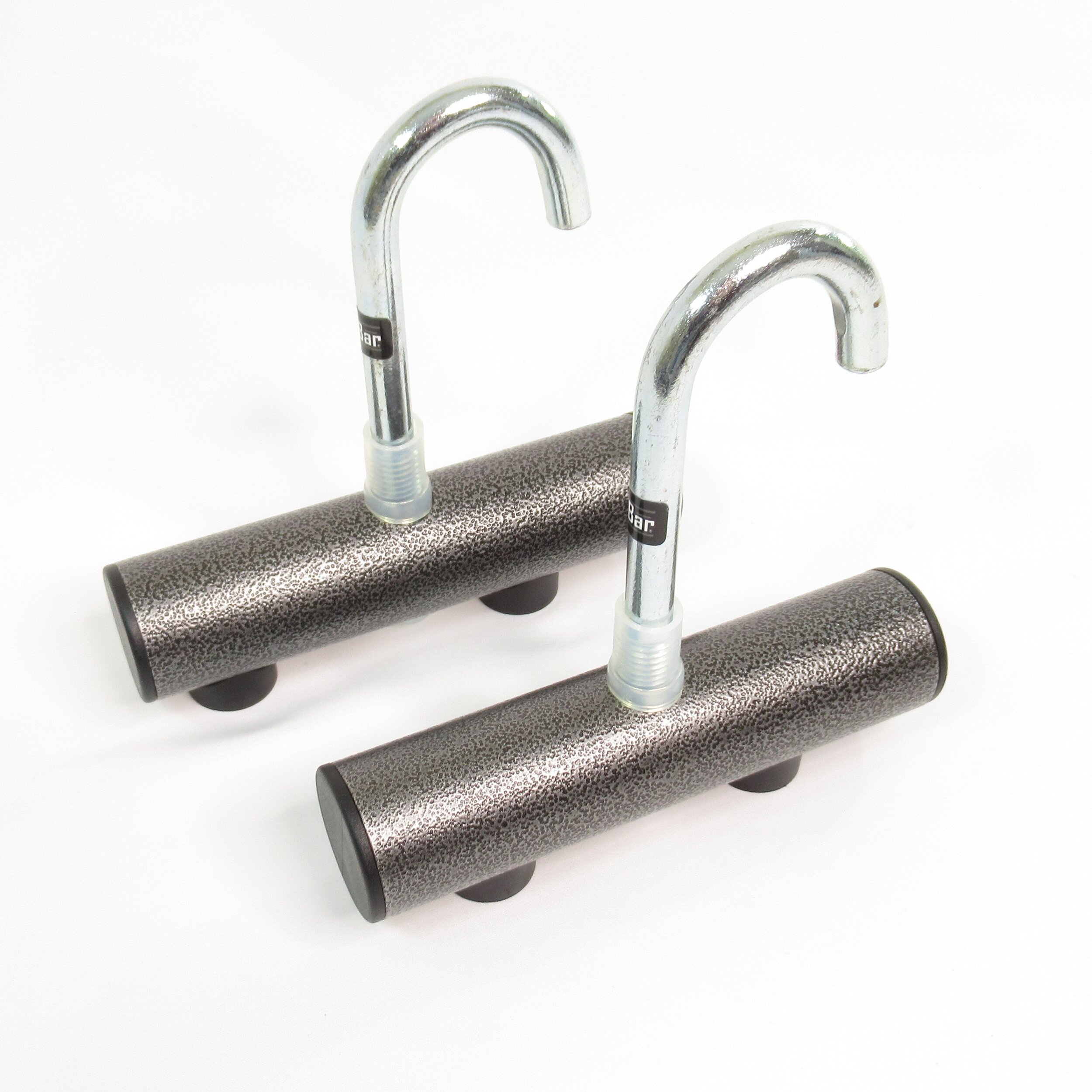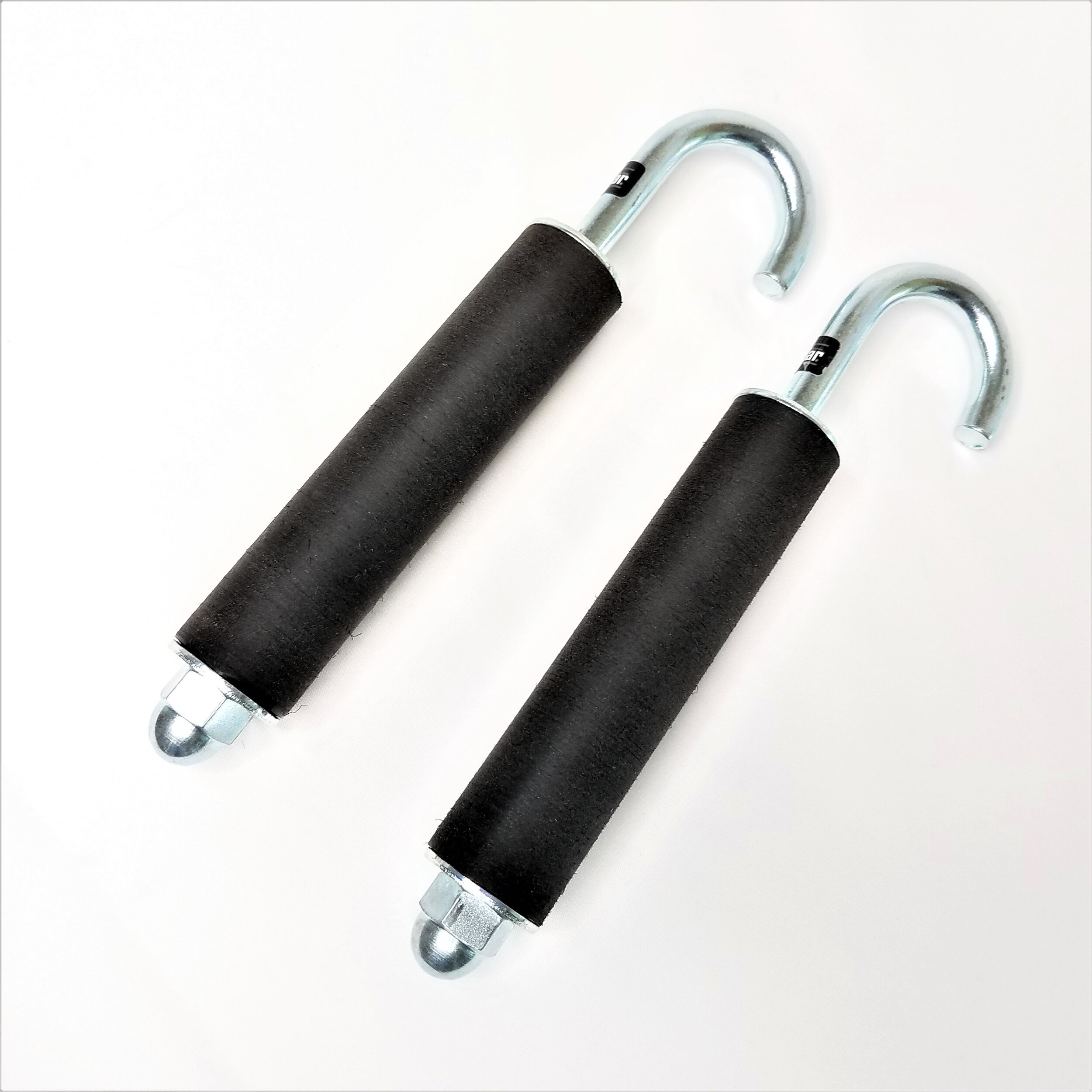Pull ups are one of the most fundamental strength training exercises that you can do with minimal equipment. You just need a pull up bar, and there are many types to choose from: a doorway pull up bar, a squat rack with a pull up bar, a wall-mount version, a pull up station at your gym or local park, or even rings or handles suspended from the ceiling in your garage. In this blog post we concentrate on the top 3 pull up variations, plus an additional unique pull up. We will cover what is known as the strict pull up – pull ups where you do not use your body momentum to aid in performing the pull up motion. Kipping pull ups, made popular with Crossfit and similar fitness genera, typically involve controlled swinging to propel yourself in a forward and upward motion.
Pull ups work the back muscles, including your lats, traps, and the teres major. Additionally, pull ups work your shoulders (deltoids), biceps, and triceps, and depending on the grip type, even your chest and core, so pull ups are a great addition to any workout regime. There are also nuances with your grip, like placement of your thumb. We cover all these here.
Pull up hand position can be broken down into wide grip (wider than your shoulders), narrow grip (narrower than your shoulders), and somewhere in between. Pull up hand position can also be defined in terms of overhand grip (pronated grip) underhand (supinated grip) and neutral grip (palms facing each other). Note the underhand pull up is also referred to as the chin up. There are other variations but these are the pull up grips that we have seen most people use on our equipment (we have sponsored dozens of fitness events where we demo product on our FitBar Pull up and Monkey Bar Rigs and have seen hundreds of different people do pull ups or chin ups!).
Wide Grip Pull Ups: This is one of the more popular pull up variations, and they are almost always done with an overhand grip. Its also one of the most difficult. Why? Because you are putting more strain on your shoulders than any other pull up type. So why do them? Because they are the best pull up workouts for engaging your back muscles. Specifically, your lats, traps, erector spinae, as well as your external obliques. Note that underhand, wide grip pull ups are not very common. Attempting to do a wide grip underhand pull up requires you to twist your forearm to the MAXIMUM torsional range of motion. It’s just uncomfortable for most people.
Narrow Grip Pull Ups: This is the pull up variation that most people try when first attempting pull ups. If you are using an overhand grip, we recommend keeping your hands placed no more that a few inches outside of each of your shoulders. The same rationale regarding forearm range of motion applies: as you move your hands in-line with your shoulders, or within your shoulders towards your body center, your forearm twists to its MINIMUM torsional range of motion. Like most exercises, listen to your body (i.e., recognize the slightest bit of strain, and then adjust accordingly to avoid injury). We recommend to use an underhand grip when doing narrow grip pull ups, or what is commonly known as a chin-up. While this still works many of the back muscles, it also engages your biceps as well as your triceps.
Neutral Grip Pull Ups: With your palms facing each other (parallel), this pull up variation has the benefit of allowing your hands to be either relatively narrow or relatively wide while keeping your forearms close to its midpoint of range of motion. This appears to put the least amount of strain on your shoulders (in our opinion), so we recommend this pull up type if you are recovering from a shoulder injury. The most natural neutral pull up grip position is with your hands in-line with your shoulders, and your palms parallel to each other. Note that you need a pull up bar with two bars extending out horizontally to perform these. Many doorway pull up bars, as well as pull up stations at your local gym, provide this feature. Alternatively, if you only have a straight-bar pull up bar, you can use our HG-2 Ball Grips, our HG-3 Neutral Grips, or our HG-1 Pull Up Handles to do neutral grip pull ups. Here’s some additional info about each one if you want to learn more.
HG-3 Neutral Grips: The Neutral Grips provide a traditional style of cylindrical grip that is horizontal when the hook stem is between your index finger and your middle finger. We provide a silicone sleeve over the hook stem for maximum comfort. If the stem is between your middle finger and your ring finger, the grip will be at an approximately 45-degee angle. While this provides another interesting pull up variation, it will put more pressure on your ring finger. The hook does allow for rotation about your forearm axis (i.e., your palms don’t have to be perfectly parallel), so you can locate your hands in their most comfortable position. The cylindrical grip surface is textured powder coat, so its easy to hang on. Additionally, there is a vinyl sleeve over the hook to protect your bar, plus it allows you to do a REALLY wide neutral grip pull up.
Most doorway pull up bars have neutral grip positions located at 16”. Gyms may sometimes have pull up stations with two or three neutral grip stations at different angles or widths. With the HG-3, and all our hooked grips, you have ENDLESS neutral grip width and angle positioning capability.
HG-1 Pull Up Handles: The foam grips on the HG-1 are easy on your hands, and the rope connection allows you to rotate your forearm to its most comfortable position – so your palms don’t HAVE to be perfectly parallel. Sometimes having your palms at a 45-degree angle is the most comfortable position. We have had customers post Amazon Reviews stating that the FitBar Pull Up Handles permitted them to do pull ups without elbow pain. Again, no claims here, just listen to your body.
If you are a gym goer, there are many pull up stations in gyms that offer a 45-degree or 30-degree grip option. With the HG-1 you can have any angular and width position. The HG-1, like the HG-3, has a sleeve to protect your bar and prevent sliding, so you can perform a wide neutral grip pull up on any straight bar. Note the foam grips can also rotate about the axis of the foam grip, requiring you to really engage your fingers when gripping it.
HG-2 Ball Grips: The FitBar Ball Grips are great for building hand and grip strength, and since it is spherical, your hand can be placed in any grip position, i.e., underhand, neutral or overhand. You can also be halfway (45-degree angle) between neutral and straight pull up grip positions. Like the HG-3, you need to place the hook stem between your fingers, and again we recommend the stem is placed between your index and middle finders.
HG-4 Minicanes: If you’ve mastered all the other pull up variations and are still looking for a challenge, check out our Minicane vertical grips. The grip is at a slight angle due to the hook offset, and it really requires you to have a strong grip to hang on. These are similar to doing what is known as towel pullups, except of course the grip itself is much more rigid. Where you can do 8 – 10 pull ups you will be lucky to get 6 – 8 pull ups with the HG-4. It’s a great grip training device for ninja warriors, OCR trainers, and people interested in developing a strong grip. Its also very good for training to do rope climbs, as you have to really squeeze the grip.
Body Position during Pull Ups: We recommend doing a pull up on a bar where you don’t have to bend your legs – your legs should stay relatively straight below your body. Our FP-2 Doorway Pull Up Bar has one of the highest bars on the market at 81” from the ground, and our SP-1 Squat Stand with Pull up Bar that is even higher at 90”. If you have to bend your knees, you always run the risk of injury should your hands slip, so this should be avoided.
Your starting pull up position is easy – just do a dead hang from the bar. When pulling up, keep your spine erect, and head tilted up slightly. Your pull up end position should have your chin just above the bar, without having to strain your neck. As you progress through your pull up reps, your pull up form will deteriorate, and you will start bending your knees. This is natural, just stop your set before your start straining.
Thumb position: We have noticed many people utilize a grip where the thumb is on the top side of the bar (as opposed to being placed on the opposite side of the bar). We have found really no difference in people’s ability to do pull ups, with thumb on top or bottom. From an analytical stand point, most people’s thumbs are not long enough to put a substantial downward pressure on the bar to make much of a difference. Now if you do attempt kipping-type pull ups, thumb on bottom is a must as you need to hang onto the bar!
Recommended pull up reps and sets: You can read a lot about the best way to do pull ups regarding the numbers of reps, number of sets, order of exercises, etc etc. From the author’s perspective, I shoot to do 10 pull ups per set. I can do more, but don’t. Why? Because usually my form will suffer after the 10th rep. So we recommend only doing the number of pull ups where you can maintain good form. Sometimes I only do 8 pullups if I am not feeling strong or recovering from a strenuous weekend. I usually do only two sets, and do the whole workout in one big circuit, focusing on upper body and core. This regime is mostly for physical maintenance, not really for increasing muscle mass. If you want to increase muscle mass, then shoot for 3 sets, and work your upper body at least twice a week, with plenty of time for recovery and proper nutrition
If you are struggling to get even a single pull up, we recommend finding a specific post or training program that can help you. We have partnered with Angela Gargano who runs a great first pull up training program that will motivate and empower you to nail your first pull up.
Products Featured in this Post
Closing thoughts: As with any fitness tips, we recommend that you considering using a fitness professional (trainer, doctor, etc) to get the best advice. We have just provided our perspective on the top 3 pull up variations, and our products that enable doing them efficiently. We hope that you enjoyed reading this blog post, and when you have mastered all these pull up variations, you may want to consider a two-finger, or even one-finger pull up (if you really like a challenge) like our friend Chad!!

